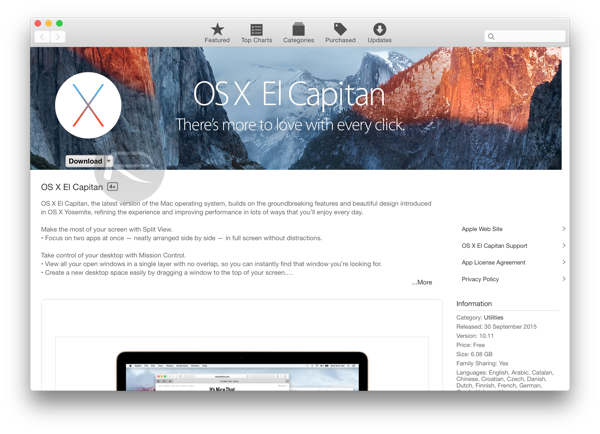

Spotlight is edging much closer to becoming almost a Google Now-type service in El Capitan.Īll of this is easier to use, too, thanks to a re-positionable and resizable Spotlight search window. The new Transit directions coming to Apple Maps are also available directly in Spotlight search, and you can see stock information, along with current weather both for your current location and for other cities of your choosing. You can get current sports scores from your favorite athletic teams going head-to-head in “matches” or whatever you sports people like, for instance, and you can also see results from web-based video sites like YouTube and Vimeo. Yosemite introduced a more powerful Spotlight search to OS X, but El Capitan improves the ‘search anywhere’ functionality it offers to return more useful in-the-moment results. It seems a little silly, but I actually can’t find my cursor with alarming frequency on my standard three monitor home office setup. Mission Control has always had a lot of potential, but these changes could get more users more comfortable with actually employing it.Īlso handy, and related since it applies best to power users, is the ability to vigorously move your mouse or trackpad pointer around to embiggen it – the cursor animates to expand in size so it’s easy to spot, letting you pick it out on a busy desktop. You can also now drag and drop full-screen spaces on one another to enter Split View, as mentioned, and swipe with three fingers to get your overview, and to move between spaces. You can now see everything in a single layer, meaning stuff won’t hide behind other open app windows, and locates things relative to their actual position on your working desktop. This is a promising feature that should offer a lot to power users especially, and those who already spend a lot of time in full-screen mode.Īpple is doing more to improve desktop management, making it easier to use Mission Control for managing your active apps and desktops from an eagle eye perspective. You can resize the divider between the two apps to give one or the other more or less space, too. To access it, you either long-click on the little green circle that normally puts an app into full-screen mode, then select from one of your other open apps to pick what takes up the right side of the screen, or drag an app to an open one in Mission Control to have it occupy the other half of your display alongside the first.Īs mentioned, the new Notes seems like a great fit for this sort of thing, since it can live alongside any other app, like Safari or Quicktime, and let you take notes on whatever content you’re reading, browsing or watching on the other half. It allows users to display two apps side-by-side in full-screen mode. This new feature for OS X got cheers when it was announced at the WWDC keynote last week. Folders keep things more organized, and thumbnails provide easy identification of what’s within a Note from the sidebar menu when you’re including media.Ĭombined with the new Split View interface, Notes is shaping up to be a massively powerful addition to OS X as a convenience feature, and could easily become one of my most-used apps on the platform. Open content from other apps directly in Notes, too, using the Share menu across OS X, and even add stuff like Maps locations, spreadsheets and more. Apple has added a lot of muscle to Notes in 10.11.įormatting ensures that you can create headers, paragraph styles, bold and italicize text and you can attach from your Photos app directly.


 0 kommentar(er)
0 kommentar(er)
